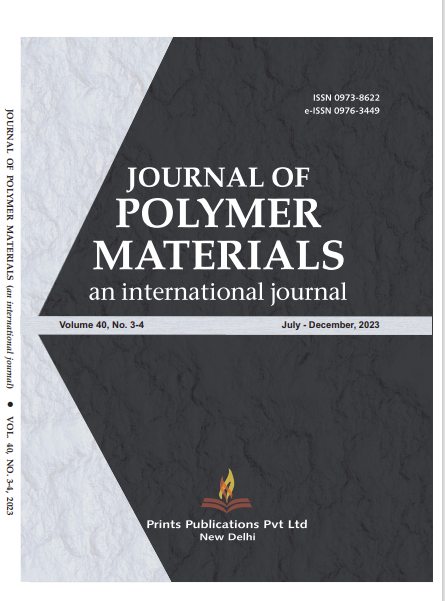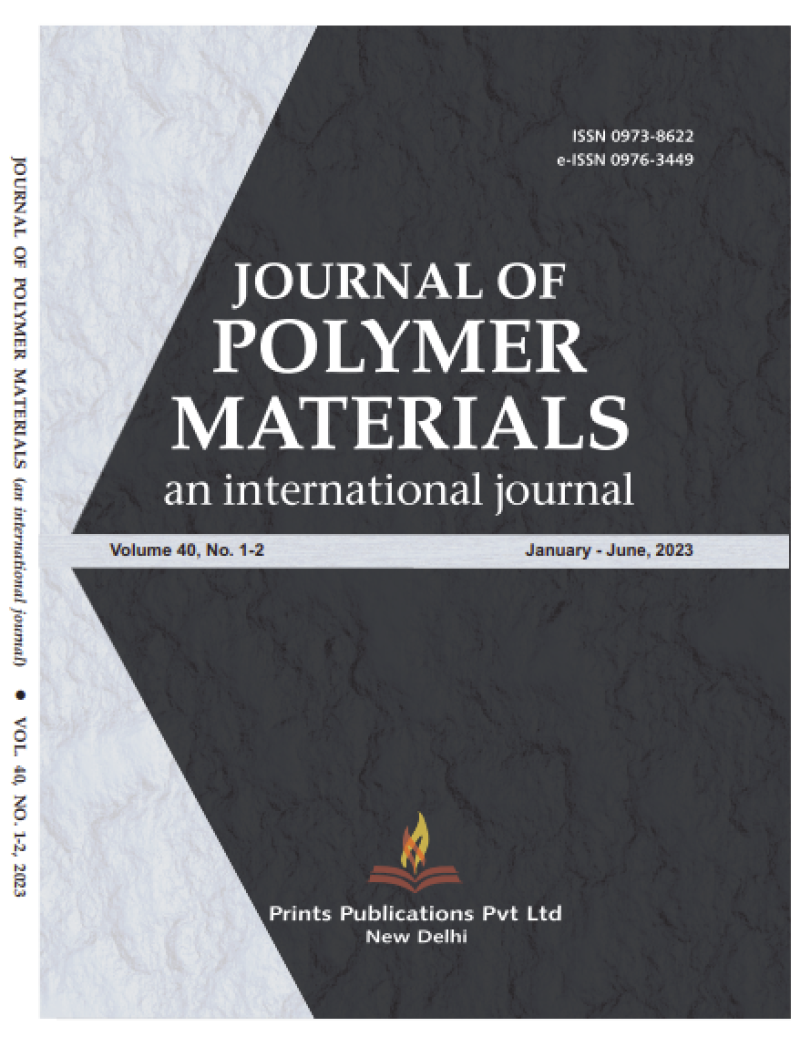Journal of Polymer Materials : An International Journal
Current Volume: 40 (2023 )
ISSN: 0973-8622
e-ISSN: 0976-3449
Periodicity: Quarterly
Month(s) of Publication: March, June, September & December
Subject: Chemistry
DOI: 10.32381/JPM
Synthesis and Characterization of Bisphenol-C Epoxy Crotonate and Its Fiber-Reinforced Composites
By : Parsotam H. Parsania, Jignesh V. Patel, Jignesh P. Patel
Page No: 271-284
Abstract
Bisphenol-C epoxy crotonate resin was synthesized by reacting 8.09g epoxy resin of bisphenol[1]C, and 2.15g crotonic acid using 25 mL 1,4-dioxane as a solvent, and 1 mL triethylamine as a catalyst at reflux temperature for 1-6 h. Solid epoxy crotonate (ECCR) is highly soluble in common organic solvents. ECCR was characterized by its acid (24.5-1.5 mg KOH/g) and hydroxyl (504.5-678.4 mg KOH/g) values. The structure of ECCR is supported by FTIR and 1 HNMR spectroscopic methods. A DSC endothermic transition at 229o C indicated melting followed by thermal polymerization of ECCR. ECCR is thermally stable up to 320o C and follows three-step degradation kinetics. The first step followed first-order degradation kinetics, while the second and third steps followed one-half-order degradation kinetics. High values of kinetic parameters suggested the rigid nature of the crosslinked resin. Jute-, Glass- and Jute-natural fiber-ECCR composites showed moderate tensile strength, flexural strength, electric strength, and volume resistivity due to the rigid nature and poor interfacial adhesion of the composites. J-ECCR and G-ECCR composites showed high water absorption tendency and excellent hydrolytic stability against water, 10% aq. HCl and 10% aq. NaCl and even in boiling water. Mechanical and electrical properties and water absorption tendency of the composites indicated their usefulness as low load-bearing housing and insulating materials. They can also be utilized in harsh environmental conditions.
Authors :
Parsotam H. Parsania, Jignesh V. Patel and Jignesh P. Patel : Polymer Chemistry Division, Department of Chemistry, Saurashtra University, Rajkot, Gujarat, India.
DOI: https://doi.org/10.32381/JPM.2023.40.3-4.9



